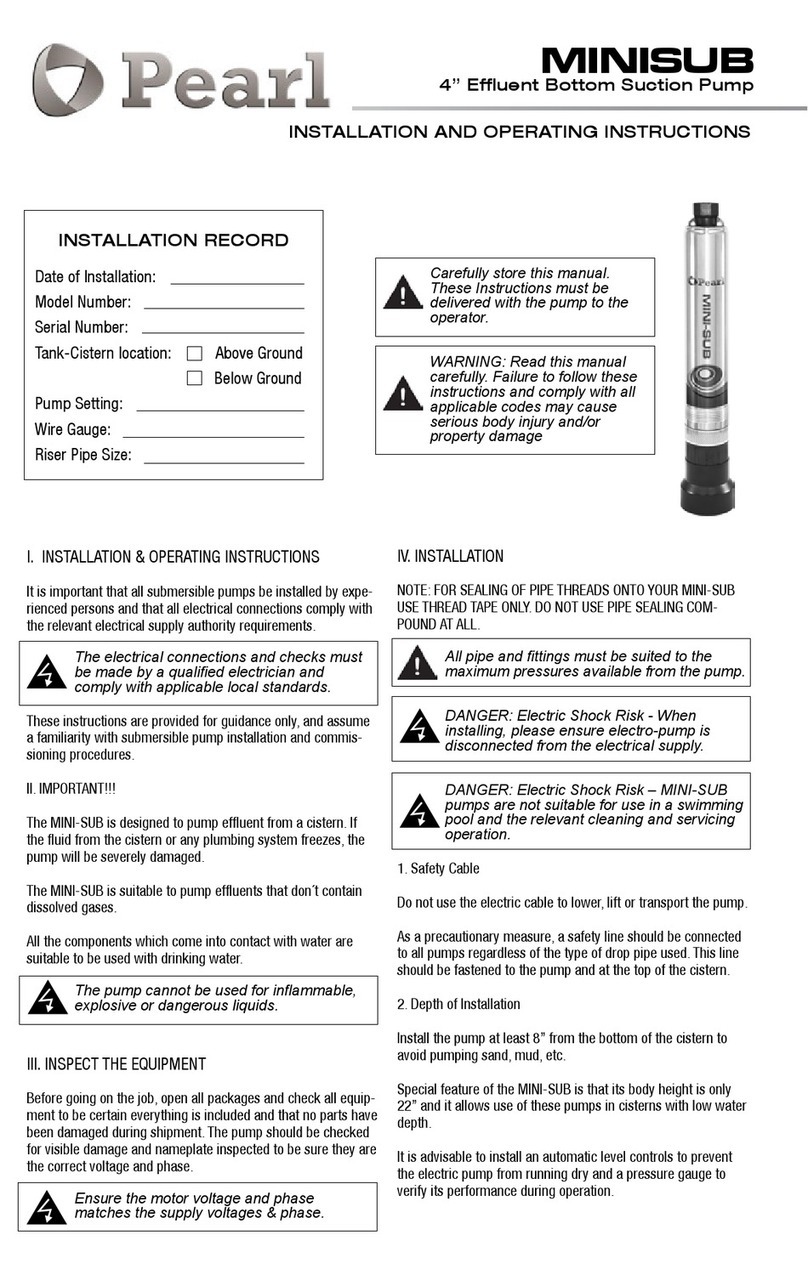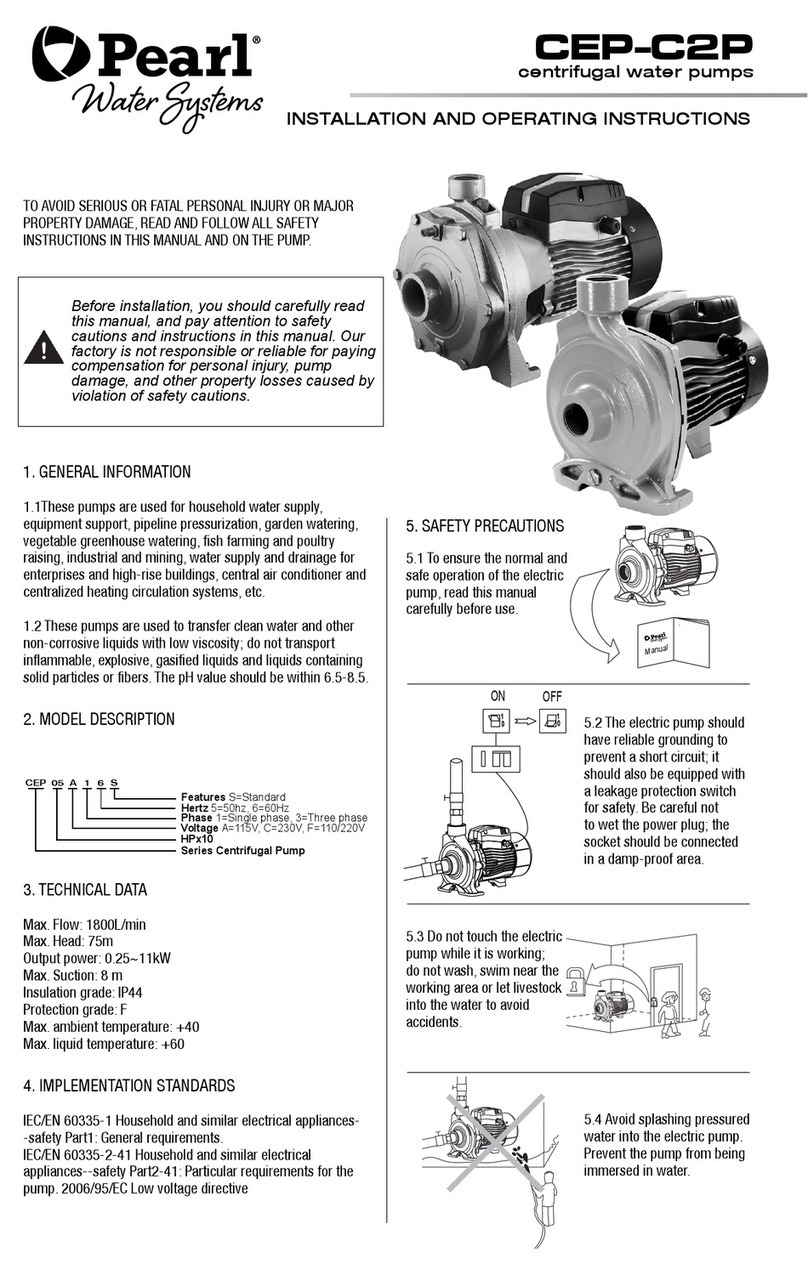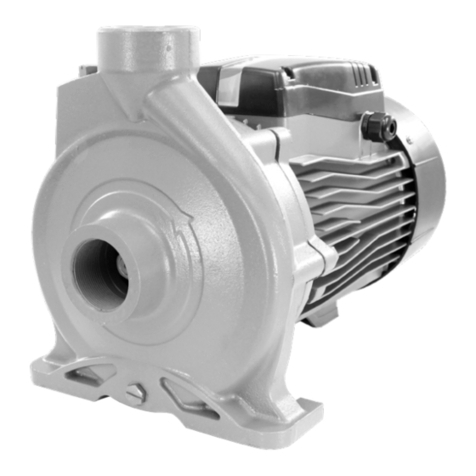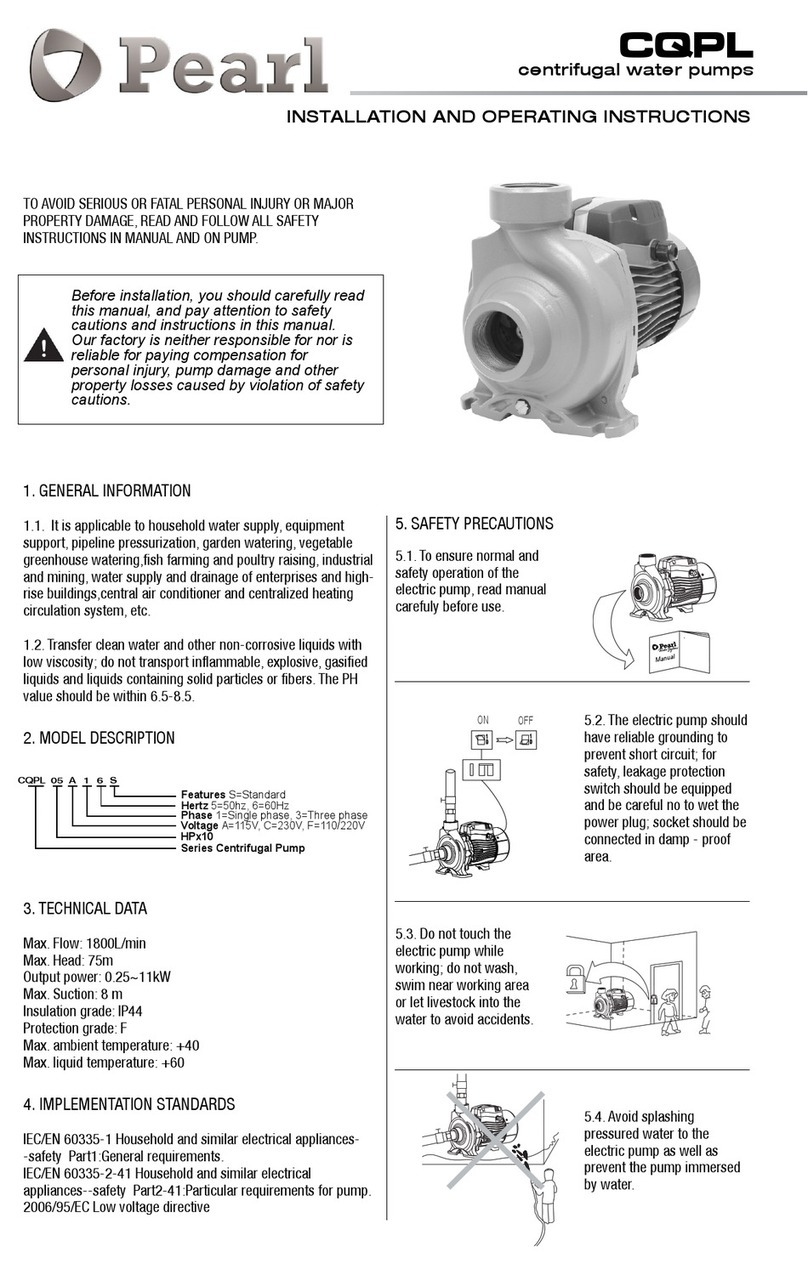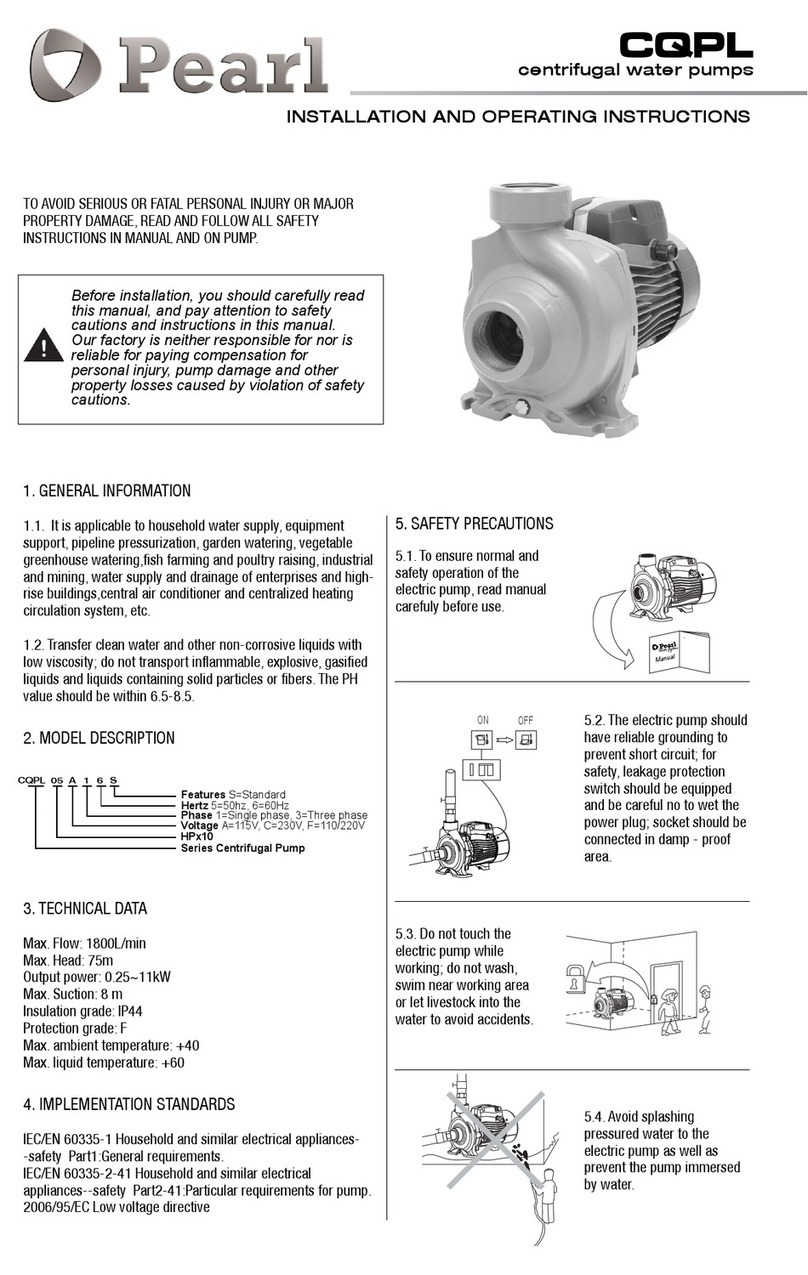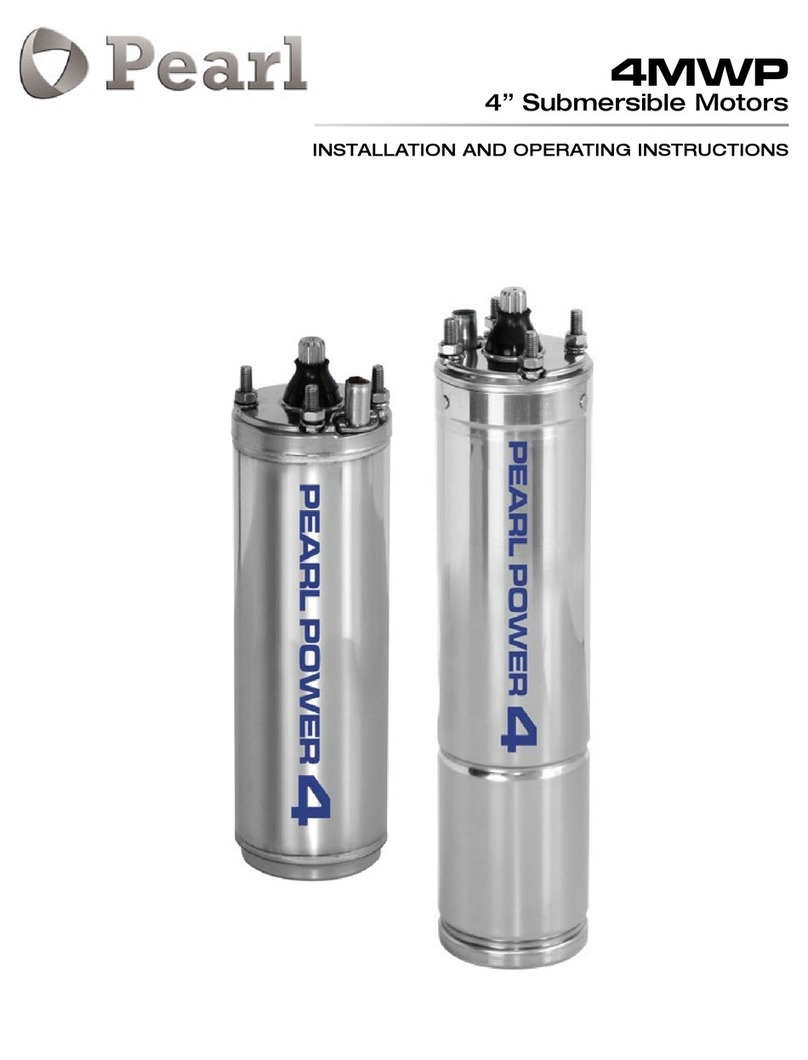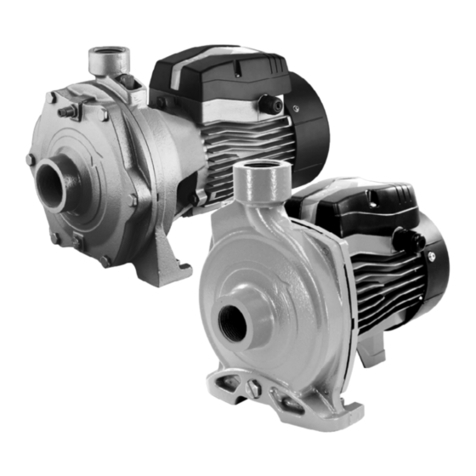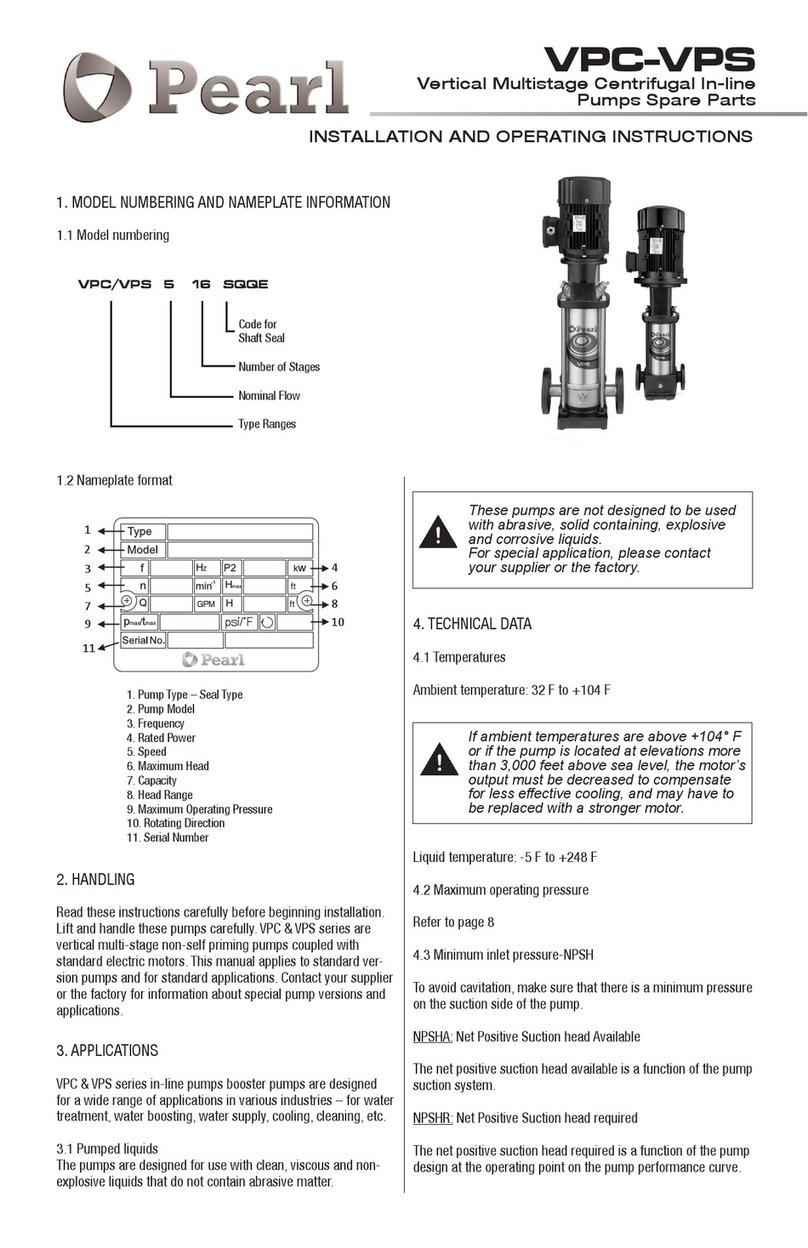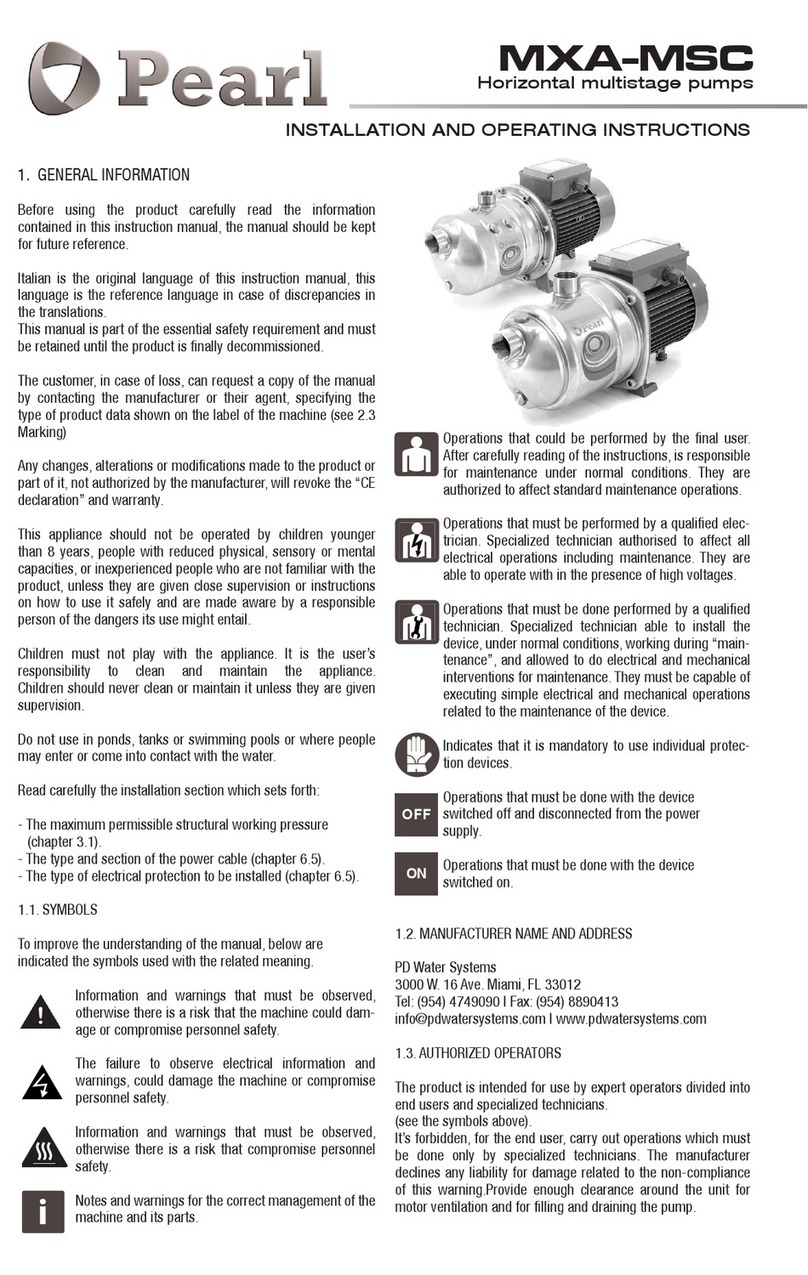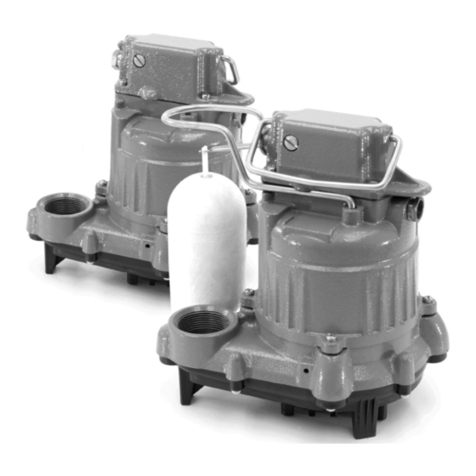
Use only copper wire to motor and ground. The ground wire
MUST be at least as large as the wire to the motor.
Wires should be color coded for ease of maintenance.
Compare the frequency and mains voltage with the name-plate
data and connect the supply conductors to the terminals in
accordance with the appropriate diagram inside the terminal box
cover.
ATTENTION: never allow washers or other metal parts to fall into
the internal cable opening between the terminal box and stator.
If this occurs, dismantle the motor to recover the object which
has fallen inside.
If the terminal box is provided with an inlet gland, use a flexible
power supply cord of the H07 RN-F type with section of cable not
less than 11 TAB IEC 60335-1.
If the terminal box is provided with an inlet bushing, connect the
power supply cord through a conduit.
For use in swimming pools (not when persons are in the pool),
garden ponds and similar places, a residual current device with
IΔN not exceeding 30 mA must be installed in the supply circuit.
Install a device for disconnection from the mains (switch) with a
contact separation of at least 0,12 inch in all poles.
With a three-phase motor install an overload protection device
with curve D appropriate for the rated current of the pump.
Single-phase, are supplied with a capacitor connected to the
terminals with an incorporated thermal protector.
ATTENTION: When the pump is fed by a frequency
converter, the minimum frequency should not fall
below 25Hz and in any case the total head of the pump
should never be lower than 10 ft.
7. STARTUP AND OPERATION
7.1. Preliminary checks before start-up of the pump
Do not start-up the device in case of damaged parts.
7.2. First starting
ATTENTION: never run the pump dry. Start the pump after filling
it completely with liquid.
When the pump is located above the water level (suction lift
operation par. 13 fig. 2) or with a positive suction head which
is too low (less than 33 ft) to open the non-return valve, fill the
pump through the priming hole (par. 13 fig. 4).
When the liquid level on the suction side is above the pump (in-
flow under positive suction head part. 13
fig. 1), fill the pump by opening the suction gate valve slowly
and completely, keeping the delivery gate valve open to release
the air.
Before starting, check that the shaft turns by hand. For this
purpose use the screwdriver notch on the shaft end on the
ventilation side.
When starting, with a three-phase motor, check that the direction
of rotation is as shown by the arrows on the lantern bracket.
Otherwise, disconnect electrical power and reverse the
connections of two phases.
Check that the pump works within its field of perfor-mance and
that the absorbed current
shown on the name-plate is not exceeded. Otherwise adjust the
delivery gate valve or the setting of any pressure switches.
If a priming loss occurs (interruption of delivery flow)
or if a pressure oscillation is indicated by the pressure gauge,
make sure all the suction pipe couplings are perfectly sealed and
tighten the two sealed plugs on the pump casing.
Never run the pump for more than five minutes with a
closed gate valve.
Prolonged operation without a change of water in the pump
causes dangerous increases of temperature and pressure.
When the water is overheated due to prolonged operation with a
closed port, stop the pump before opening the gate valve.
To avoid any risk of danger to users and the creation of harmful
thermal stress in the pump and system due to large temperature
differentials, wait until the water has cooled inside the pump
before starting again.
If the water is overheated on account of prolonged operation with
a non-primed or insufficiently filled pump (suction lift operation),
wait until cool before opening the draining and filling plugs.
Care must be taken when the pumped fluid has a high
temperature. Do not touch the fluid when its tem-
perature is higher than 140 °F. Do not touch the pump
when the surface temperature is higher than 176 °F.
7.3. Self-priming
(Capability to clear the air in the suction pipe when starting with
the pump located above the water level).
Conditions for self-priming:
• suction pipe with connections perfectly airtight and properly
immersed in the water to be lifted;
• discharge pipe with a straight vertical free line above discharge
port ≥16,5 ft (≥33 ft for JCCQ15, JCCH 15, JCCH 20), before a
non-return valve (par. 13 fig. 6).
• pump casing completely filled with clean cold water berfore
starting.
The pump is not self-priming with liquids containing oil, alcohol
or foaming substances.
The check valve prevents reverse siphoning through the pump
when the pump is stopped and retains water in the pump for
the next start.
Without a foot valve or a check valve on the suction connection
the filling operation must be repeated before each start-up.
ATTENTION: avoid a prolonged operation with
unprimed pump, without water delivery from the com-
pletely opened outlet. If the pump does not prime in 5
minutes: stop the motor, remove the priming plug and
add more water.
If necessary, repeat the priming operation after the pump has
been first emptied and then completely filled with clean cold
water.
7.4. Gate valve regulation
With the gate valve completely open or with an outlet pressure
lower than the minimum pressure shown on the name-plate, the
pump may be noisy. To reduce noise regulate the delivery gate
valve.
7.5. Switch off of the pump
The appliance must be switch off every time there are
faults. (see troubleshooting).
The product is designed for a continuous duty, the switch off
is performed by disconnecting the power supply by means the
OFF
ON

